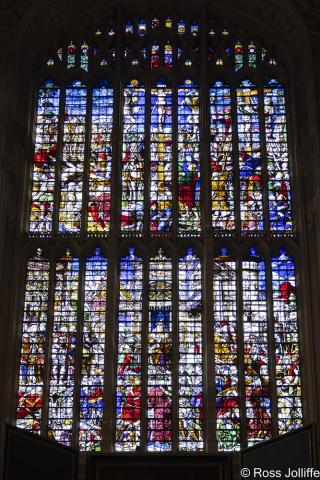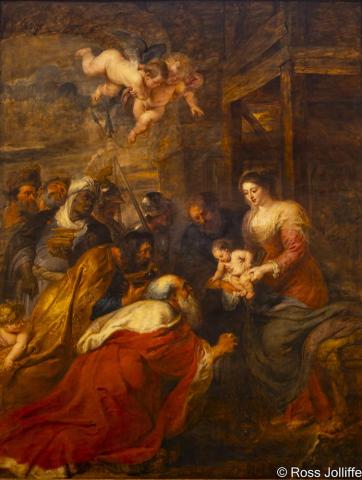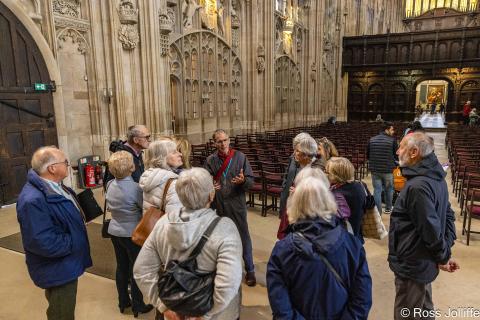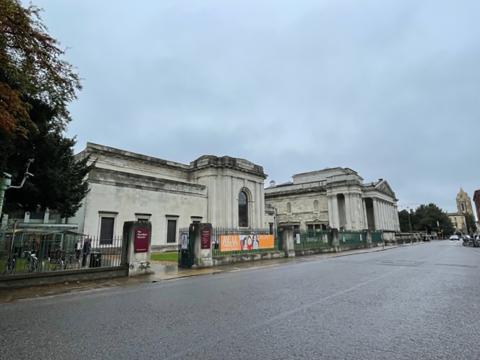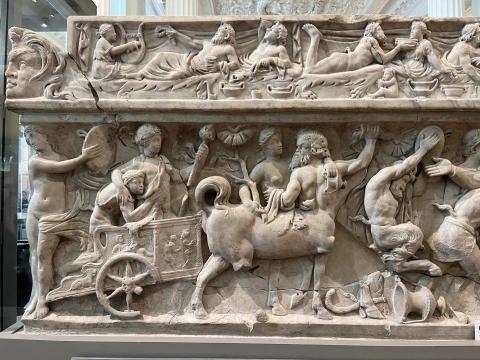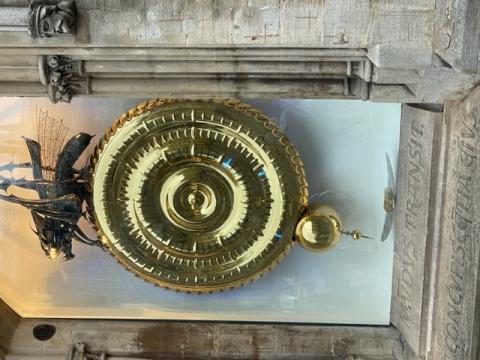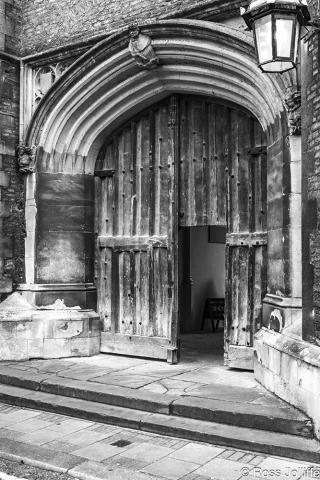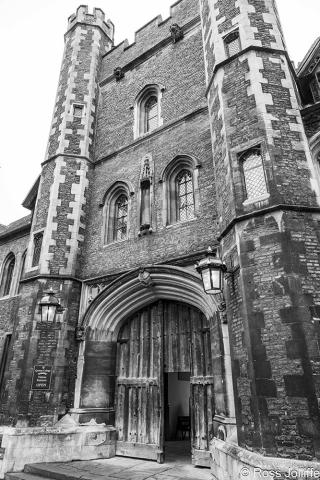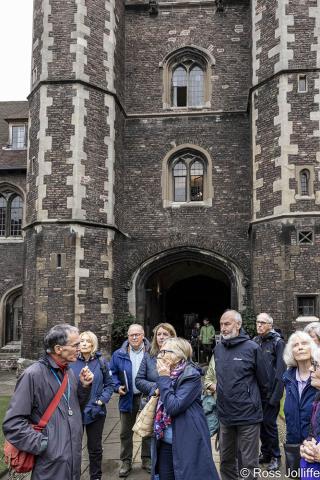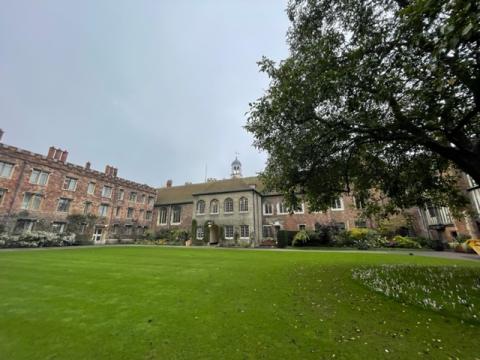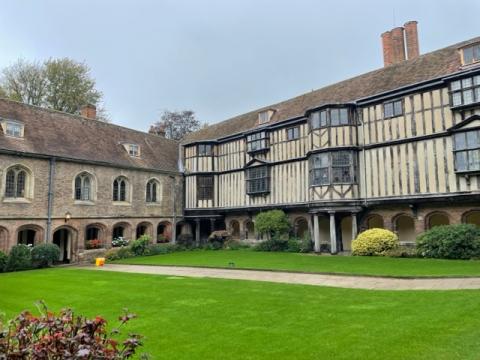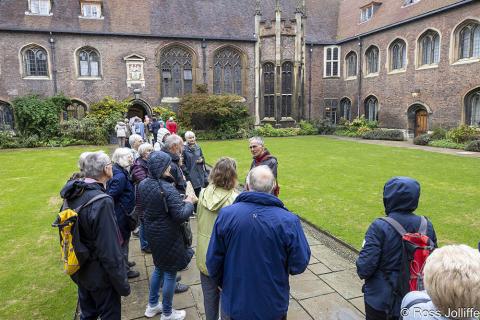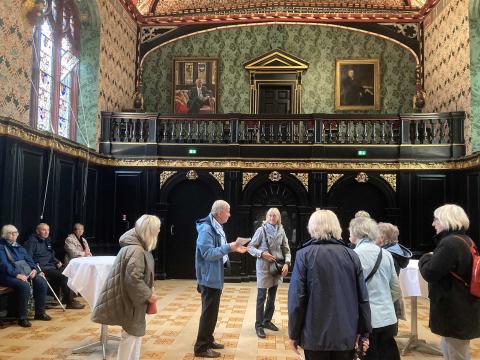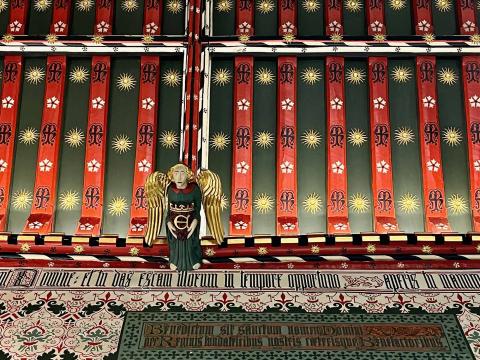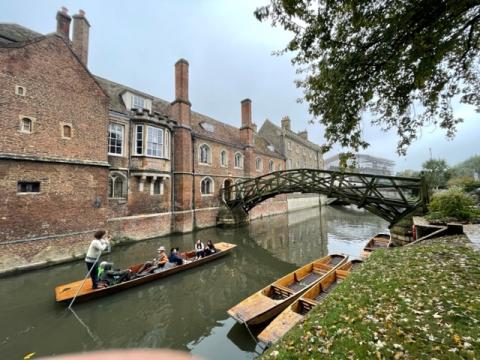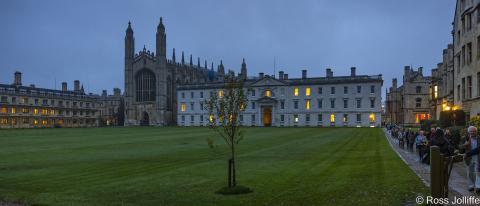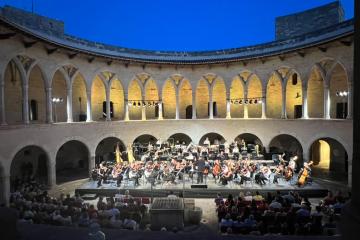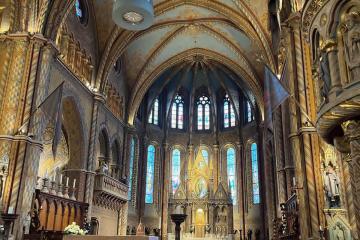After careful thought, we will be discontinuing the Music Monthly newsletter.
Cambridge - a city breathing its past into the present
Cambridge - a city breathing its past into the present
23 Oct 2023
An October visit to Cambridge by members didn't disappoint. Despite adverse climatic conditions 45 participants thoroughly enjoyed the Cambridge trip organised by Michael Steward, to whom we extend our thanks for the smooth running of the day.
Leisurely Morning exploration at The Fitzwilliam Museum
Richard, 7th Viscount Fitzwilliam of Merrion, an Irish peer and a graduate of Trinity Hall Cambridge, passed away in 1816, leaving £100,000 and his amazing collection of art, handwritten scores by some of the greatest composers, books and illuminated manuscripts to the University of Cambridge.
Interestingly the museum opened 32 years after his bequest, its building work having been delayed by the death of the original architect George Basevi, who had fallen off the west tower of Ely cathedral while inspecting repairs.
Admission is free, in addition to half a million works of art and antiquities available to us, three special exhibitions were running this autumn.
- Real Families: Stories of Change
- Black Atlantic: Power, People, Resistance
- Mediterranean Embroideries
King’s College Chapel guided visit at 2pm
Some of us had elected to eat at the nearby Browns brasserie and miraculously, as we divided into three groups to visit King’s College Chapel, rain ceased.
The tour, led by our excellent Blue Badge guides, proved most informative.
We learnt that its foundation stone was laid in 1446 by King Henry VI, but that alas, the War of the Roses had put a stop to the grandiose project.
Richard III distinguished himself with a huge legacy. By the time of his death in 1485, the first six bays of the Chapel had reached full height, and five, roofed with oak and lead, were in use.
It was left to the Tudor kings Henry VII and Henry VIII to achieve the completion of King's College Chapel, recognised as one of Europe's finest, late medieval buildings. The fan vaulted ceiling was admired by everybody, such a marvel of architecture.
Queens’ College
Then a short stroll took us to Queens’, and we all thought that there was so much to like about its set-up.
Located on both sides of the river Cam, the college boasts the famed Mathematical Bridge, designed in 1748 by William Etheridge, and built in 1749 by James Essex the younger.
So why Queens’ in the plural asked one of us? Simply because the College was first founded by Queen Margaret of Anjou, wife of King Henry VI of England.
And re-founded 17 years later by Elizabeth Woodville, the Queen of Edward IV.
We also loved its gardens, oozing charm, and someone noticed an unusual plant with exquisite white and purple flowers: Tricyrtis Formosana, better known as ‘toad lily’.
Holy Eucharist service at King’s College Chapel
We made our way back to King’s College Chapel, queuing to attend the one-hour service, which was to be The Holy Eucharist.
A solemn, peaceful, calm conclusion of a splendid day.
The choir, comprising of 16 boy choristers and 14 male undergraduates, enchanted us. Lifting our heads, the blue part of the stained-glass windows was still vivid in the falling night, and the angels smiling.
About the Author
Régine Godfrey
JOIN OUR MAILING LIST
Become an instant expert!
Find out more about the arts by becoming a Supporter of The Arts Society.
For just £20 a year you will receive invitations to exclusive member events and courses, special offers and concessions, our regular newsletter and our beautiful arts magazine, full of news, views, events and artist profiles.
FIND YOUR NEAREST SOCIETY
MORE FEATURES
More than twenty members of our Arts Society flew out in October 2025 for a short but fascinating trip discovering th
Year in Review: A Remarkable Year for The Arts Society Mallorca



